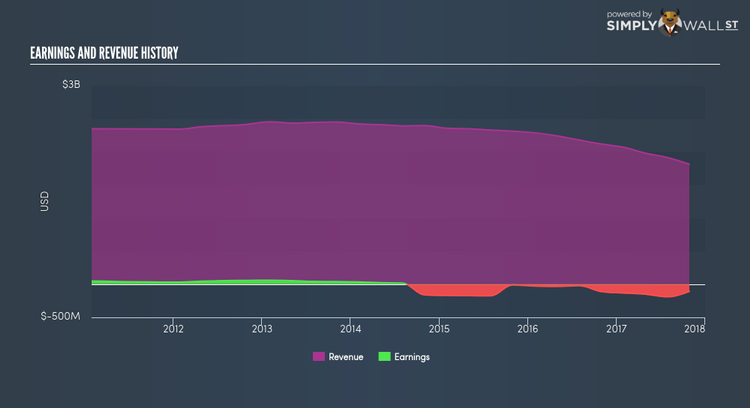Should You Be Holding Sears Hometown and Outlet Stores Inc (NASDAQ:SHOS) Right Now?

For Sears Hometown and Outlet Stores Inc’s (NASDAQ:SHOS) shareholders, and also potential investors in the stock, understanding how the stock’s risk and return characteristics can impact your portfolio is important. SHOS is exposed to market-wide risk, which arises from investing in the stock market. This risk reflects changes in economic and political factors that affects all stocks, and is measured by its beta. Not every stock is exposed to the same level of market risk, and the market as a whole represents a beta of one. A stock with a beta greater than one is considered more sensitive to market-wide shocks compared to a stock that trades below the value of one.
See our latest analysis for Sears Hometown and Outlet Stores
What does SHOS’s beta value mean?
With a beta of 1.51, Sears Hometown and Outlet Stores is a stock that tends to experience more gains than the market during a growth phase and also a bigger reduction in value compared to the market during a broad downturn. Based on this beta value, SHOS may be a stock for investors with a portfolio mainly made up of low-beta stocks. This is because during times of bullish sentiment, you can reap more of the upside with high-beta stocks compared to muted movements of low-beta holdings.
How does SHOS’s size and industry impact its risk?
A market capitalisation of USD $52.21M puts SHOS in the category of small-cap stocks, which tends to possess higher beta than larger companies. Moreover, SHOS’s industry, specialty retail, is considered to be cyclical, which means it is more volatile than the market over the economic cycle. Therefore, investors may expect high beta associated with small companies, as well as those operating in the specialty retail industry, relative to those more well-established firms in a more defensive industry. This is consistent with SHOS’s individual beta value we discussed above. Next, we will examine the fundamental factors which can cause cyclicality in the stock.

Is SHOS’s cost structure indicative of a high beta?
An asset-heavy company tends to have a higher beta because the risk associated with running fixed assets during a downturn is highly expensive. I examine SHOS’s ratio of fixed assets to total assets to see whether the company is highly exposed to the risk of this type of constraint. With a fixed-assets-to-total-assets ratio of greater than 30%, SHOS appears to be a company that invests a large amount of capital in assets that are hard to scale down on short-notice. As a result, this aspect of SHOS indicates a higher beta than a similar size company with a lower portion of fixed assets on their balance sheet. This is consistent with is current beta value which also indicates high volatility.
What this means for you:
Are you a shareholder? You may reap the gains of SHOS’s returns in times of an economic boom. Though the business does have higher fixed cost than what is considered safe, during times of growth, consumer demand may be high enough to not warrant immediate concerns. However, during a downturn, a more defensive stock can cushion the impact of this risk. For more company-specific research on SHOS, check out our our free analysis plaform here.
Are you a potential investor? Before you buy SHOS, you should factor how your portfolio currently moves with the wider market, and where we are in the economic cycle. This stock could be an outperformer during times of growth, and it may be worth taking a deeper dive into the fundamentals to crystalize your thoughts on SHOS. Continue your research on the stock with our free fundamental research report for SHOS here.
To help readers see pass the short term volatility of the financial market, we aim to bring you a long-term focused research analysis purely driven by fundamental data. Note that our analysis does not factor in the latest price sensitive company announcements.
The author is an independent contributor and at the time of publication had no position in the stocks mentioned.
